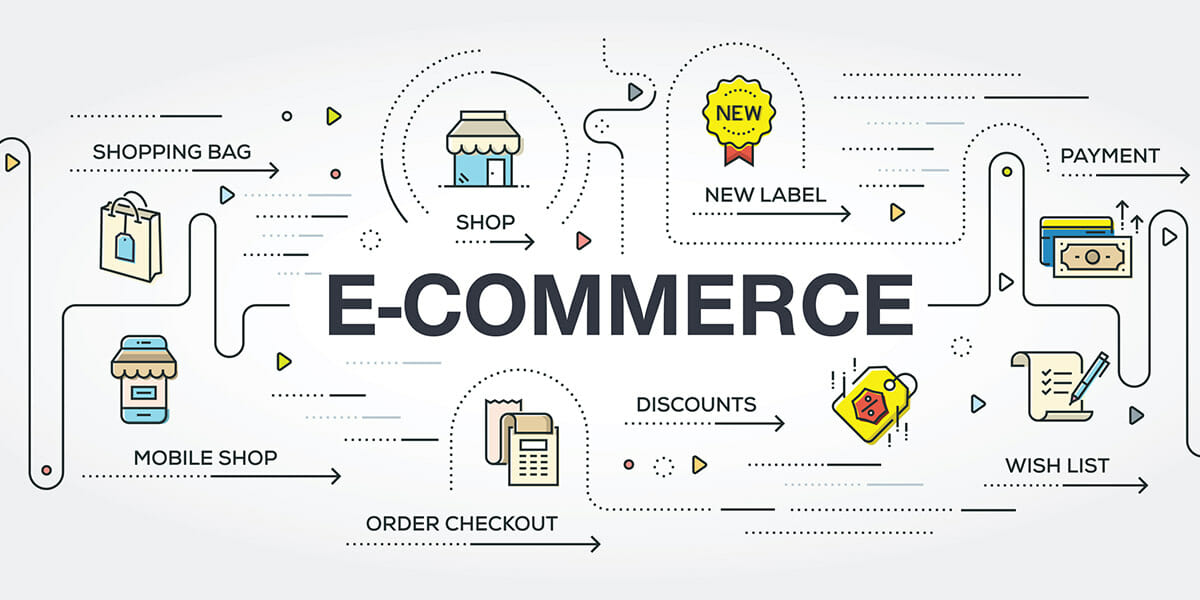How to Improve E-commerce Sell-Through Rate through Smart Marketing Tactics
The e-commerce industry is only getting better and there have been lots of changes in the customer purchasing behavior recently due to the COVID-19 pandemic. Especially during lockdown, many people now prefer to shop online instead of going to the store and doing so.
In fact, roughly 33% of shoppers worldwide are online, so this is something you need to take into consideration. However, even if everyone was an online shopper, you need to know that your strategy needs to be the right one in order for you to improve your e-commerce sales.
Nevertheless, let’s not waste any more time because in this article, we will dive deeper into learning more about how we can improve e-commerce sales through the right marketing tactics.
The importance of a sell-through rate

Seeking the demand for a product is highly important if you want to have a successful sell-through rate. Your inventory is directly related to your cash flow and if you carry extra stock or not, you will still be losing unnecessary money through sales or discounts.
The sell-through rate is an important metric that allows retailers to predict the purchase and product demand, clarifying the amount they need to take from suppliers and manufacturers.
When you know how quickly and how much you’re selling your product, sell-through rates help merchants identify how effectively they are managing their inventory and avoiding costs that are related to discounting and storage.
7 Ways to improve your ecommerce sell-through rate

1. Create an email list
Many organizations might underestimate the power of emails, but facts show the results and the truth is that more than four billion emails are sent daily and this means that emails are just as important as you may think. Most people use email as a primary source of communication with either a business, or when speaking to someone professionally.
You can create a powerful email marketing campaign to help you achieve your goals and business growth. In order to start your email marketing campaign, you need to build up your email list and include your past and current clients.
After you create your email list, pick a customer relationship management system (CRM) like Hubspot and automate the process. After, you can create an email template design and use it to reflect your brand’s voice and image.
2. Create your social media strategy
Your e-commerce business will be dependent on social media marketing and will allow you to make a long-lasting impression on your audience, making you stand out from the rest. Creating a social media marketing strategy means more than just posting on social media platforms.
Creating a sense of urgency is highly important if you want to have a good reputation in the online world. These kinds of tactics are excellent for making people purchase from you because simply put, urgency beats everything else!
An urgency sense and scarcity work on a simple principle. The fact that consumers assign much higher values to products they think are rare. Products that are labeled as “special edition” or “limited-time offer” will give consumers a feeling as if they are missing out on something, encouraging them to buy the product before it’s sold out.
However, keep in mind that this shouldn’t always be done. Try to incorporate this strategy on a seasonal basis.
3. Keep testing and improving
No matter how experienced you are or how well your ecommerce business is going, never stop learning and improving. The online world keeps evolving and with all the new AI algorithms, there are always changes in what works. However, something that will never change is knowing what your customers want and need.
The AI algorithms focus on personalization and will always recommend a product that a user likes the most based on their past and current search history. You can use Google Analytics for analyzing customer data and customize product offers for matching their profiles. When you show your customer’s product choices, you should show them what they want. After you do this, they’ll feel like you already know what they want and this improves the user experience too.
4. Hire an e-commerce expert
Firstly, you have to define your social media goals and create a buyer persona to learn who your competitors are and define your target audience. After you define these, you’ll have a clear picture of which social media platform you need to use.
If you have a younger audience, for instance, you would want to target TikTok and Instagram. However, if your audience is all about business, LinkedIn is the right place to be.
Secondly, You should create content that fits your target audience. If your target audience is all about business, you need to create content that fits this niche. Different people will prefer different content, but you need to stick to one path.
Lastly, Once you post on your social media platforms, you need to use tools that monitor your social media posts to fully understand your engagement levels. This helps you understand if your marketing strategies achieve your goals or not.
Additionally, you can use this information for targeting your social media marketing strategies and further promoting your products.
5. Make your shipping free and offer money-back guarantees

Sometimes, it can be scary to order online because of the fear you have that you might lose money. Offering free shipping and a money-back guarantee is a good way to make the customer feel calm about this decision.
Fast shipping is a good alternative, but may not be enough for you to stand out from your competitors. 66% of customers expect free shipping when they order online. Besides that, offering a money-back guarantee is what can help you convert more leads.
Always remember that online shopping comes with a risk because the customer never gets to try the product before they purchase it. You can try to give out free shipping to your products with the highest available margin or above the minimum cost. Free shipping in other words, is a way of having a low customer acquisition cost.
Also, offering money-back guarantees reduce risk and shows that as a business, you believe in your product’s value and help build trust with your customers. This not only gives customers safety, but it also helps more customers purchase your products.
6. Improve your brand awareness
Brand awareness is a critical factor in helping your customers remember and recall your products and branding. This helps customers make a decision when they are about to purchase something and when they need to choose between you and competitors.
By working on strategies that help you maintain and build brand awareness, you are building trust with your customers and creating more potential for long-term relationships. Brand awareness is a critical factor in customer loyalty and this is the main driver in converting more sales.
Most businesses will build brand awareness by using guest blogging strategies and regardless of the blogs you post on your site, it helps increase engagement rates. You can use these blogs to redirect readers to your online business and this will increase your brand exposure.
Additionally, you can consider using infographics. 32% of marketers claim that visual images are one of the most important forms of content. Eye-catching images are an excellent way of grabbing your viewer’s attention and creating brand awareness.
7. Include limited-time offers

No matter what you do, whichever step you follow, it’s never a bad idea to hire an e-commerce expert. Running an e-commerce business is time-consuming so whatever burden they can lessen for you is always a plus for you. E-commerce experts are always caught up with the latest trends and try to help you throughout your journey.
It can be challenging at times to stay updated with the latest information in the e-commerce world, but if someone does it for you, it’s better. E-commerce professionals know exactly how the market works and they’re able to identify what works best.
The e-commerce world is always evolving
As we said before, the e-commerce world is always evolving and there’s nothing that will change that. Always stay updated with the trends and personalize your services with your customers. After all, they are the buyers so you need to know what they want before they say it to you.
Even if you don’t have the time to keep up with all of the changes going on in the e-commerce world, you can always hire a professional to do so.




